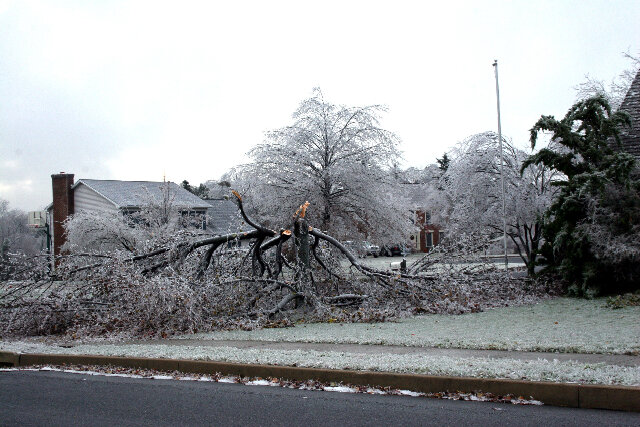Beyond the Bradford Pear
When the Bradford pear, Pyrus calleryana ‘Bradford’, made its debut into commercial horticulture in the 60s, it was touted as the perfect street tree. With its early showy bloom, attractive shape and fall color, it had potential. Unfortunately, a few decades of experience have shown that there are many weaknesses that should be considered before planting one of these ubiquitous trees.
While a planting of Bradford pears is a sight to behold, its problems will eventually turn the same planting into an unsightly mess. Fast growing and weak branched, the trees are prone to self-destructing in strong winds or heavy ice. A life span of 20 years is a generous estimate. The flowers have an unpleasant rotting fish smell that attracts flies as pollinators and the small inedible fruit has no wildlife value. Many trees also sucker heavily around their bases and continue to do so for years after the main tree has been removed.
Instead of planting a tree with such obvious failings, consider planting one that can offer much in the way of quality for your landscape. Over the next few weeks, we will feature flowering trees and shrubs that might not be as common as the Bradford pear, but bring much more to the table than a tree split down the middle.
Tomorrow’s feature is a wonderful flowering shrub, Corylopsis spicata, (spike witchhazel).


